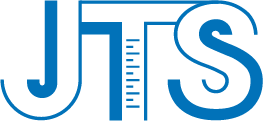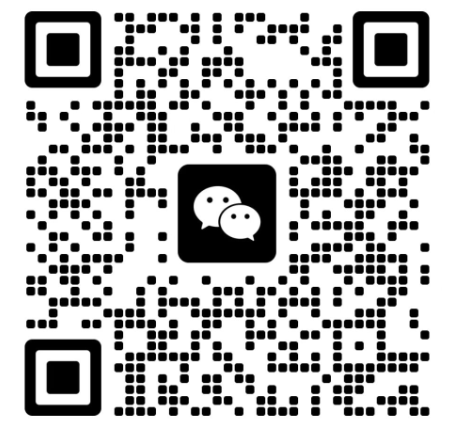Textile and footwear testingProduct
Your Location:Home > Textile and footwear testingGB 31701-2015 "Safety Technical Code for Infants and Children Textile Products" is China's first mandatory national safety technical standard specifically for textile products intended for infants and children.
I. Scope of Application and Product Classification
This standard applies to textile products for infants and children sold within China.Age and Height Classification:
•Infant Textile Products: Age 36 months and below (height generally not exceeding 100 cm). These products must comply with Class A requirements.
•Children's Textile Products: Age over 3 years up to 14 years (height generally between 100 cm - 160 cm). Among these, products in direct contact with skin must meet at least Class B requirements; products not in direct contact with skin must meet at least Class C requirements.
•Note:If both age and height are labeled on a product, the age shall be the primary criterion for classification.
Excluded Products: Plush stuffed toys, textile crafts, disposable sanitary products, luggage, handbags, backpacks, umbrellas, carpets, professional sportswear, etc., are outside the scope of this standard.
II. Core Technical Requirements
The standard's technical requirements are systematic, primarily ensuring safety in the following aspects:1. Fabric Requirements:Fabrics used in the outer material, lining, and accessories of infant and children's textile products must not only comply with the corresponding safety technical class (A, B, or C) requirements of GB 18401 ("National General Safety Technical Code for Textile Products") but also meet several important additional safety indicators:
1)Color Fastness to Wet Rubbing: Prevents dye from transferring onto skin or being ingested if an infant mouths the clothing. (Note: Products in natural color or bleached are exempt from this test.)
2)Heavy Metals (Lead, Cadmium): Only assessed for fabrics with coatings and pigment printing. The indicator is the total amount of lead and cadmium as a ratio of the coating or pigment mass.
3)Phthalates (Plasticizers): Only assessed for fabrics with coatings and pigment printing. Limits are set for 6 types of plasticizers.
4)Flammability: Assessed on the product's outer layer fabric to reduce fire risk. However, pure or blended fabrics made of wool, acrylic, modacrylic, nylon, polypropylene, and polyester fibers are exempt. Fabrics with a mass per unit area greater than 90 g/m² are also exempt.
5)Special Recommendation: The standard explicitly states that flame retardant treatment is not recommended for infant textile products. If such treatment is applied, it must comply with relevant national laws and mandatory standards to avoid potential secondary hazards from chemical flame retardants.
2. Filling Material Requirements:1)Both fiber fillings and feather & down fillings must comply with the corresponding safety technical class requirements of GB 18401.
2)Feather & down fillings must also comply with the microbiological technical indicators in GB/T 17685 ("Feather and Down").
3)Other fillings (e.g., sponge, latex) must comply with relevant national laws and mandatory standards.
3. Accessory Requirements:This is a major focus of the standard, aiming to prevent risks like choking from swallowing and scratches.1)Size and Tensile Strength:
•It is recommended that accessories sized ≤ 3 mm should not be used on infant textile products.
•All accessories that could be grabbed and mouthed by infants (e.g., buttons, rivets, sequins) must withstand specified tensile strength tests to ensure they cannot be easily detached, preventing choking hazards. (Note: This primarily targets infant products; accessories on children's textile products are generally not tested for tensile strength.)
2)Sharp Points and Edges:
•Used accessories must not have accessible sharp points and sharp edges to prevent scratches or punctures.
3)Cord and Drawstring Requirements:
•The regulations are very detailed and are paramount for mechanical safety.
•Garments for infants and children under 7 years: No cords or drawstrings are allowed in the hood and neck area.
•Cords in other areas (e.g., waist, bottom of legs) have restrictions on length and free ends to prevent entanglement risks.
•(Note: Non-garment products like hats, gloves, bibs, aprons, scarves, sleeping bags, swaddling clothes, bedding, or non-everyday wear like stage performance costumes are exempt from cord requirements.)
4.Other Requirements:
•Packaging: Sharp objects like metal pins should not be used in product packaging.
•Residues: Sharp objects like metal pins are not allowed to remain on the product.
•Label Placement: For infant clothing worn next to the skin, permanent care labels (wash care labels) should be placed in a position not in direct contact with the skin to prevent friction from damaging the infant's delicate skin.
III. Labeling and Marking RequirementsWhen purchasing, always check the product's permanent label. GB 31701 has explicit and mandatory regulations for labeling, which differ from GB 18401.•For infant products (36 months and below): Must be labeled with "GB 31701 Infant Products". Simultaneously, their safety technical category is Class A.
•For children's products (over 3 years to 14 years): Must be labeled with "GB 31701" and the corresponding safety technical requirement category (A, B, or C Class), e.g., "GB 31701 B类 (Class B)". It is not necessary to redundantly mark the GB 18401 standard number and category.
IV. Chemical Indicator Limits (Summary Table)
| Item | A Class (Infant Products) | B Class (Direct Skin Contact) | C Class (Non-Direct Skin Contact) | Remarks & Notes | Test Method |
| Formaldehyde Content (mg/kg) | ≤20 | ≤75 | ≤300 | Mandatory Requirement | GB/T 2912.1 |
| pH Value | 4.0~7.5 | 4.0~8.5 | 4.0~9.0 | Mandatory Requirement | GB/T 7573 |
| Decomposable Carcinogenic Aromatic Amine Dyes (mg/kg) | ≤20 | ≤20 | ≤20 | Banned (Limit ≤20) | GB/T 17592, GB/T 23344 |
| Color Fastness to Water | ≥3-4 | ≥3 | ≥3 | Mandatory Requirement | GB/T 5713 |
| Color Fastness to Acid Perspiration | ≥3-4 | ≥3 | ≥3 | Mandatory Requirement | GB/T 3922 |
| Color Fastness to Alkaline Perspiration | ≥3-4 | ≥3 | ≥3 | Mandatory Requirement | GB/T 3922 |
| Color Fastness to Dry Rubbing | ≥4 | ≥4 | ≥4 | Mandatory Requirement | GB/T 3920 |
| Color Fastness to Wet Rubbing | ≥3 (Dark Colors 2-3) | ≥2-3 | / | Class A ≥3 (Dark Colors 2-3); Class B ≥2-3; Class C N/A; Natural/Bleached exempt | GB/T 3920 |
| Color Fastness to Saliva | ≥4 | / | / | Only for infant textiles (Staining & Color Change ≥4) | GB/T 18886 |
| Heavy Metals (mg/kg) | / | Only for coated/pigment printed fabrics | / | ||
| Lead (Pb) | ≤90 | / | / | Total Pb+Cd as ratio of coating/pigment mass | GB/T 30157 |
| Cadmium (Cd) | ≤100 | / | / | Total Pb+Cd as ratio of coating/pigment mass | GB/T 30157 |
| Phthalates (%) | / | Only for coated/pigment printed fabrics | GB/T 20388 | ||
| DEHP+DBP+BBP | ≤0.1 | / | / | Sum of three plasticizers ≤0.1% | GB/T 20388 |
| DINP+DIDP+DNOP | ≤0.1 | / | / | Sum of three plasticizers ≤0.1% | GB/T 20388 |
| Flammability | Class 1 (Normal Flammability) | Class 1 (Normal Flammability) | Class 1 (Normal Flammability) | Only outer layer fabric; Exemptions: Wool, acrylic, modacrylic, nylon, PP, PES pure/blends; >90 g/m² fabric | GB/T 14644 |
J-Testing is a CNAS, CMA, and CPSIA accredited laboratory, committed to providing global clients with professional third-party testing, consulting services, and cross-border certification assistance.






 Our Service
Our Service
